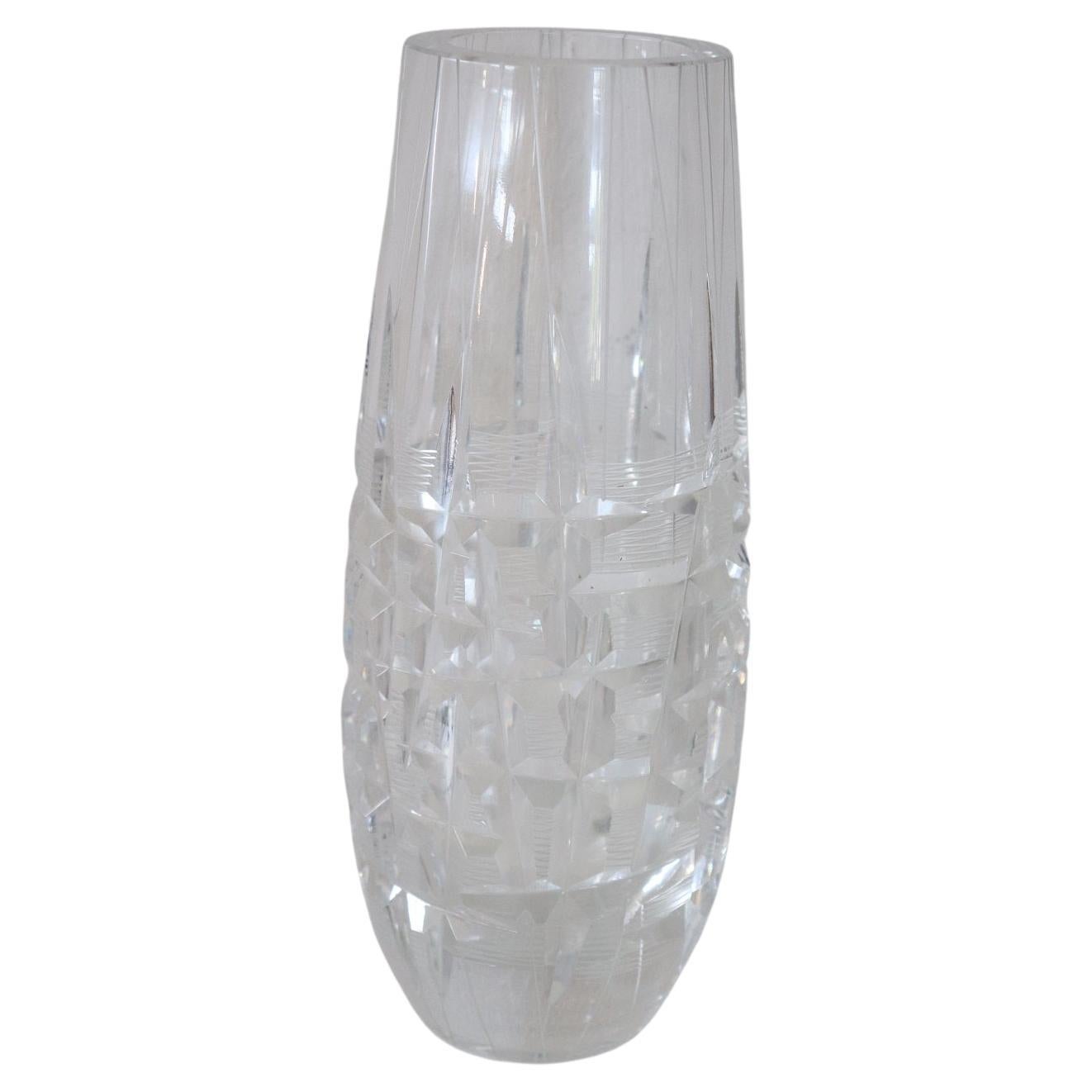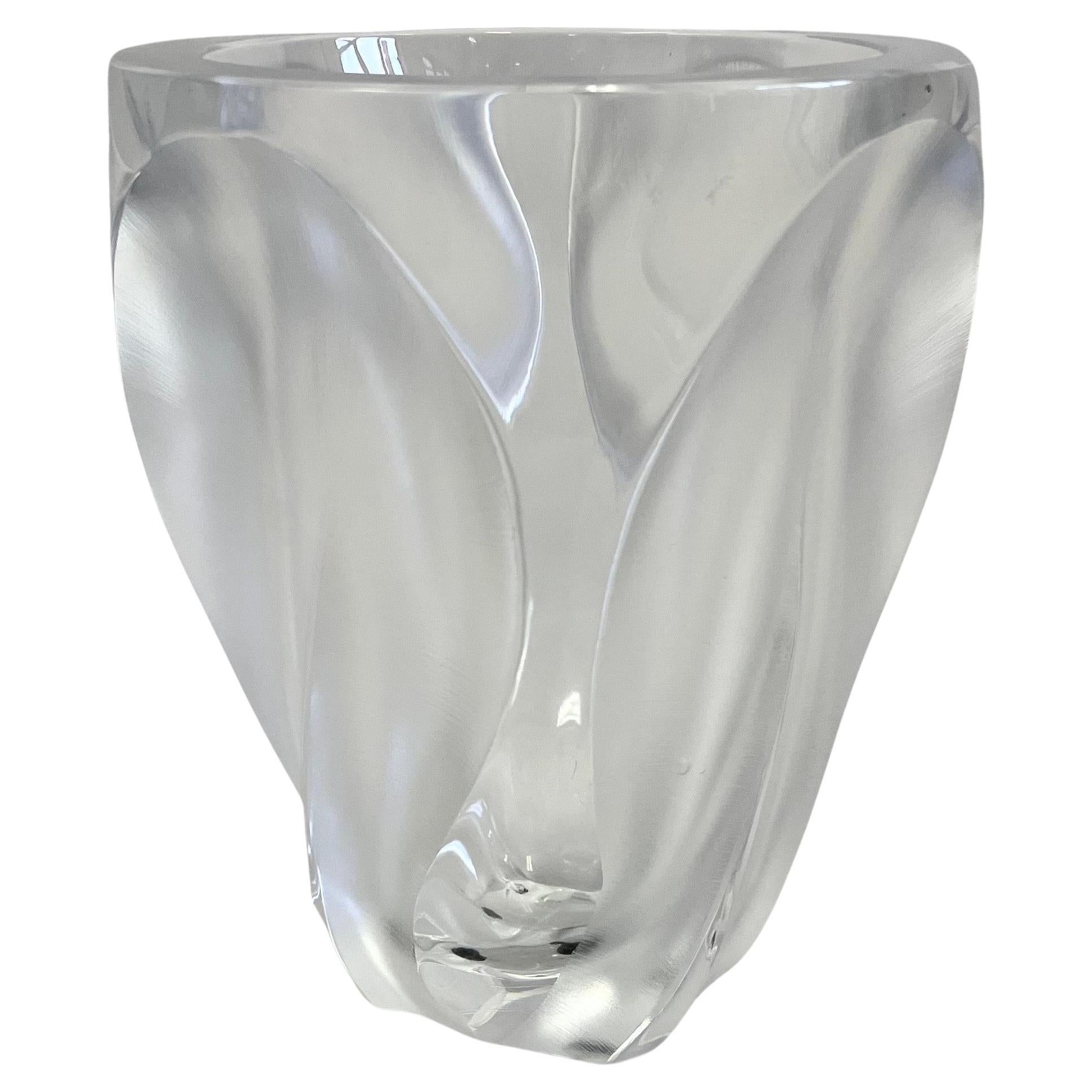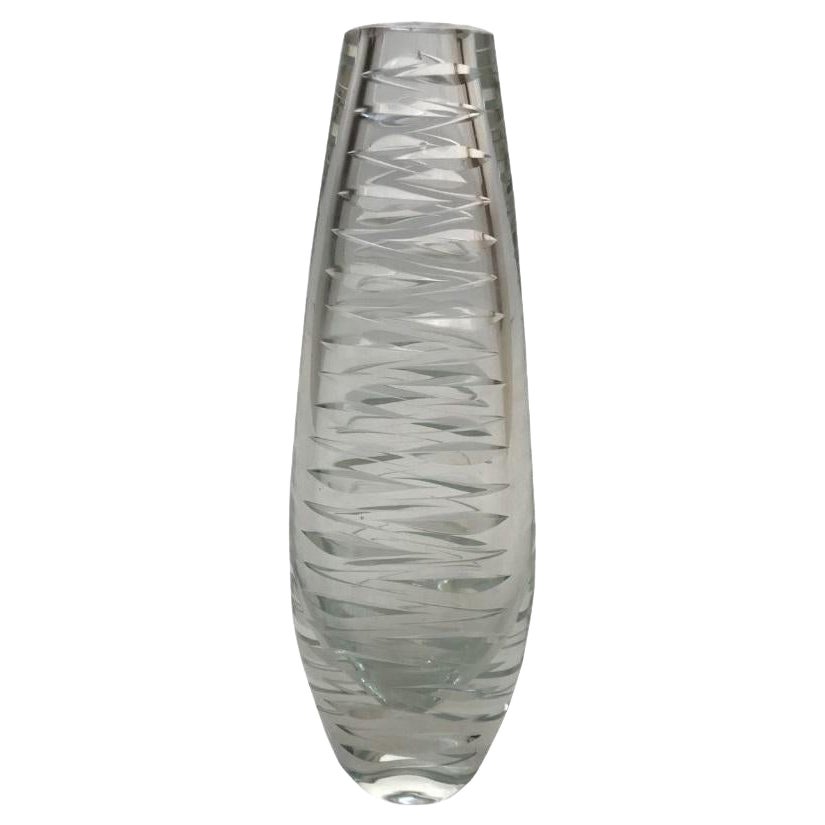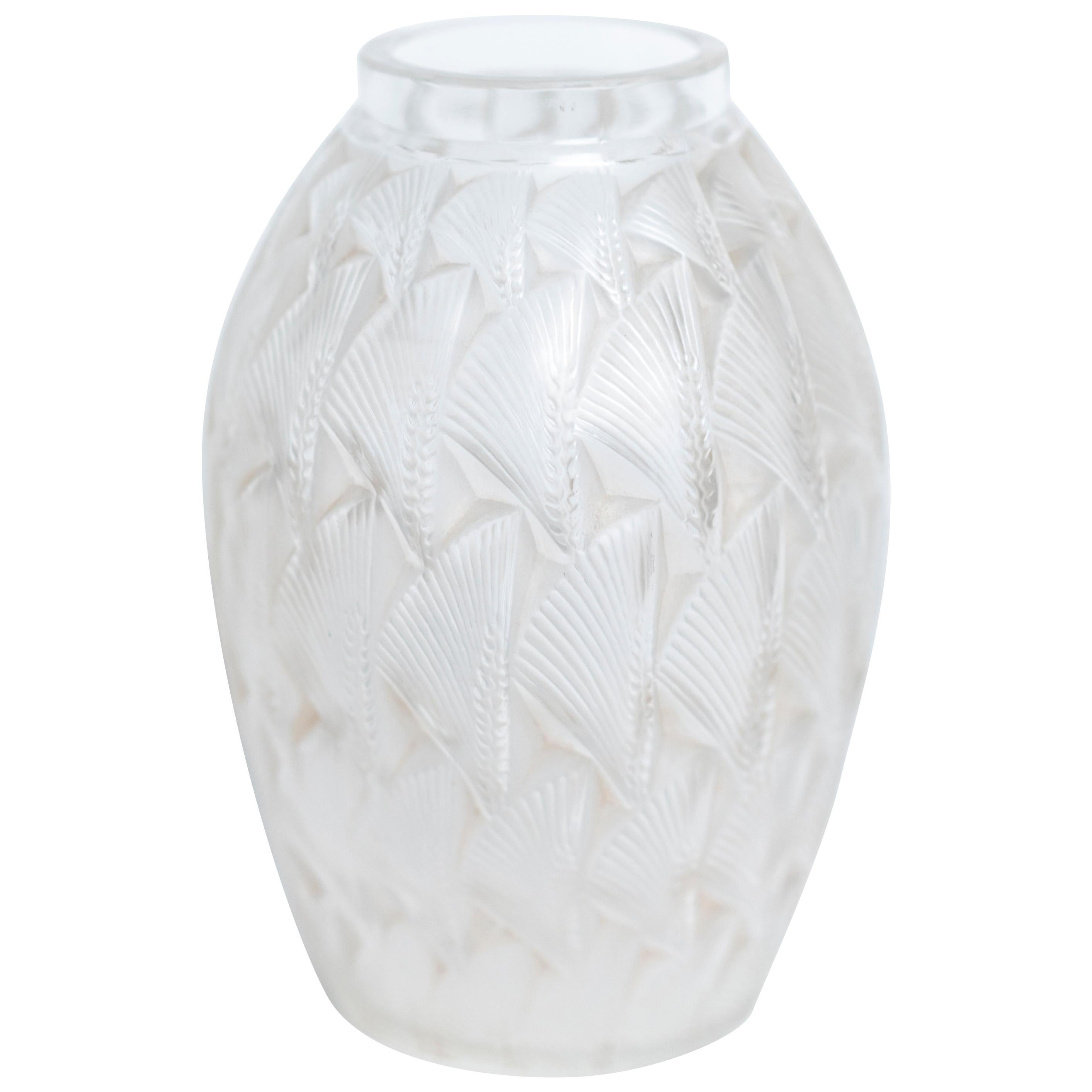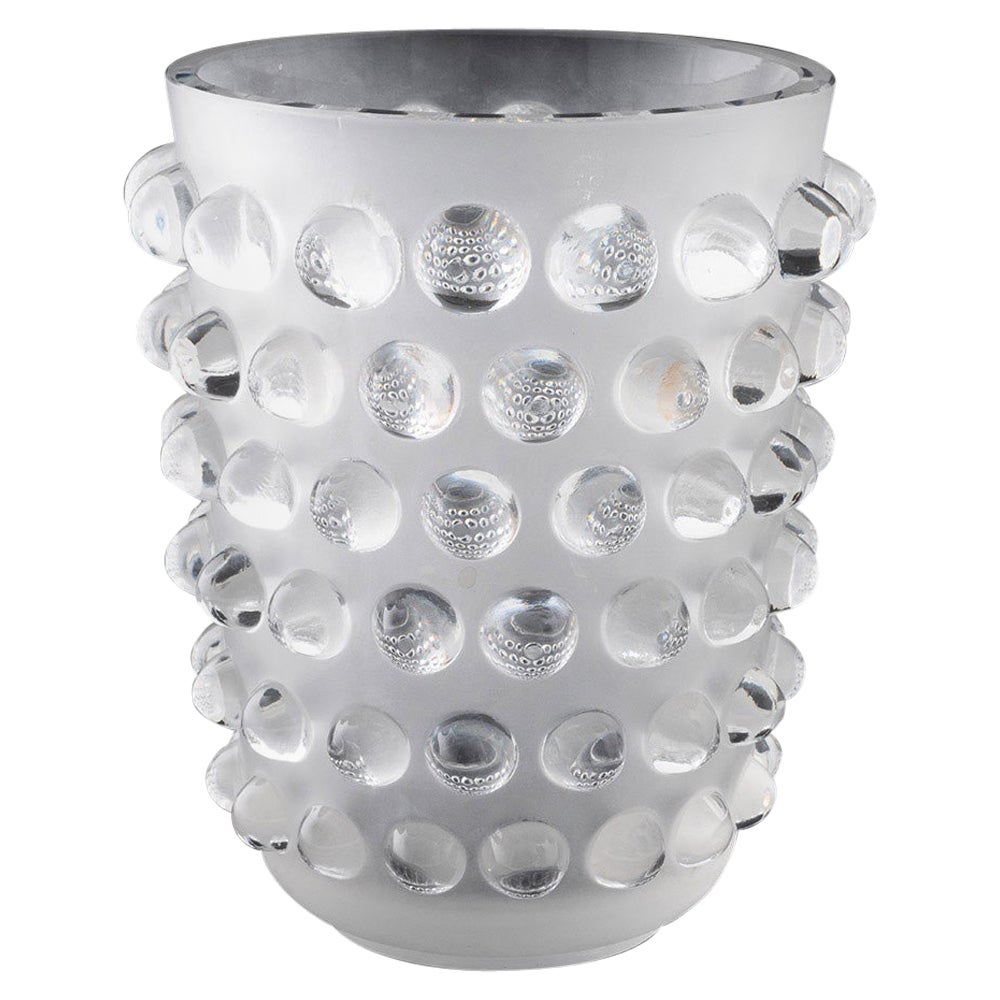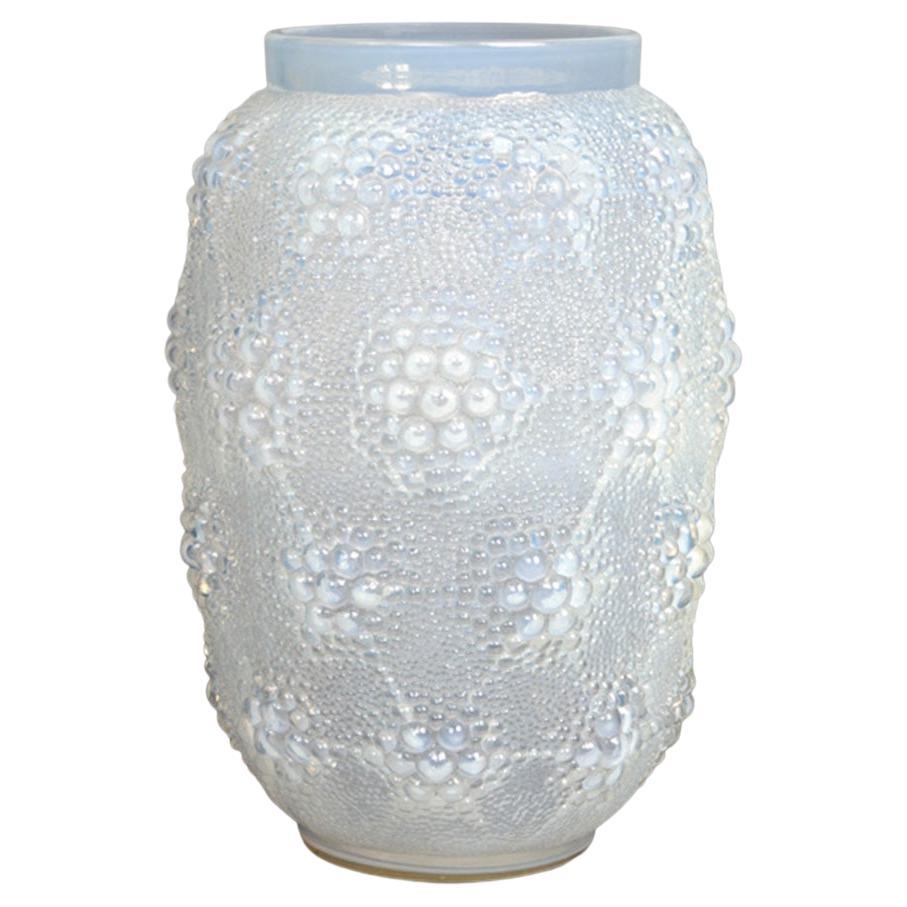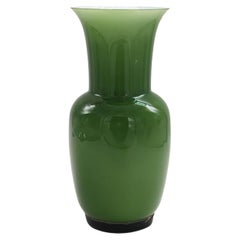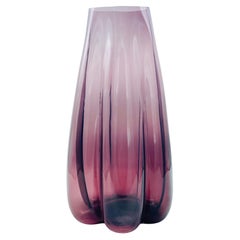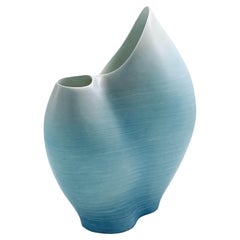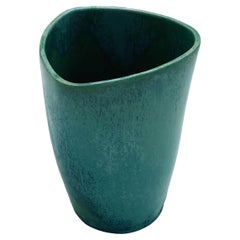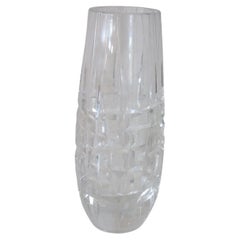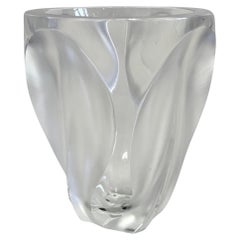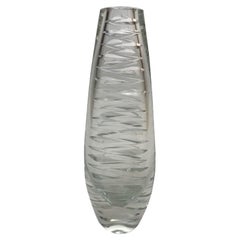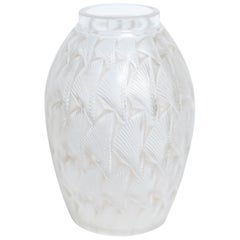Items Similar to Satin Crystal Vase in the Manner of Rene Lalique, Italy 1960s
Want more images or videos?
Request additional images or videos from the seller
1 of 8
Satin Crystal Vase in the Manner of Rene Lalique, Italy 1960s
$1,681.38
£1,238.33
€1,400
CA$2,287.39
A$2,541.79
CHF 1,331.93
MX$31,170.55
NOK 16,987.94
SEK 15,981.63
DKK 10,657.98
Shipping
Retrieving quote...The 1stDibs Promise:
Authenticity Guarantee,
Money-Back Guarantee,
24-Hour Cancellation
About the Item
Fine vase made of clear satin crystal with a silk effect, ideal for display in both classic and modern settings. The vase is reminiscent of the beautiful vases created by Frenchman Rene' Lalique.
- Similar to:René Lalique (Designer)
- Dimensions:Height: 18.12 in (46 cm)Diameter: 7.88 in (20 cm)
- Style:Mid-Century Modern (Of the Period)
- Materials and Techniques:
- Place of Origin:
- Period:
- Date of Manufacture:1960
- Condition:
- Seller Location:Naples, IT
- Reference Number:1stDibs: LU3221332573832
About the Seller
4.9
Gold Seller
Premium sellers maintaining a 4.3+ rating and 24-hour response times
1stDibs seller since 2017
384 sales on 1stDibs
Typical response time: 3 hours
- ShippingRetrieving quote...Shipping from: Naples, Italy
- Return Policy
Authenticity Guarantee
In the unlikely event there’s an issue with an item’s authenticity, contact us within 1 year for a full refund. DetailsMoney-Back Guarantee
If your item is not as described, is damaged in transit, or does not arrive, contact us within 7 days for a full refund. Details24-Hour Cancellation
You have a 24-hour grace period in which to reconsider your purchase, with no questions asked.Vetted Professional Sellers
Our world-class sellers must adhere to strict standards for service and quality, maintaining the integrity of our listings.Price-Match Guarantee
If you find that a seller listed the same item for a lower price elsewhere, we’ll match it.Trusted Global Delivery
Our best-in-class carrier network provides specialized shipping options worldwide, including custom delivery.More From This Seller
View AllTommaso Buzzi for Venini "Incamiciato" Murano Glass Vase, Italy, 1989
By Venini, Tomaso Buzzi
Located in Naples, IT
"Incamiciato" Italian Art glass vase by Tomaso Buzzi for Venini.
Clear, white and green. With original label.
Signed: Venini Italia '89.
Category
Vintage 1980s Italian Mid-Century Modern Vases
Materials
Murano Glass
Alessadro Mendini Style Venetian Violet Murano Glass Vase, Italy 1970s
By Alessandro Mendini
Located in Naples, IT
Large blown Murano glass vase in Venetian purple, the rounded shape is given by the glass using a blown technique, Italy 1970. In the style of Alessandro Mendini.
Category
Vintage 1970s Italian Mid-Century Modern Vases
Materials
Murano Glass
Vibi Torino Ceramic Vase Mod.607, Italy 1970s
By Vibi
Located in Naples, IT
Stylized ceramic vase, airbrushed and cast decorated in shaded colours of pink and blue with white enamel inside. Signed Vibi Torino Italy 607.
Category
Vintage 1970s Italian Mid-Century Modern Vases
Materials
Ceramic
Guido Andlovitz Lavenia, Elegant Vase in Glazed Ceramic, 1950s
By Guido Andlovitz, Lavenia
Located in Naples, IT
Small earthenware vase modelled by casting and glazed in matt green, by Guido Andlovitz for Societa'ceramica italiana Lavenia 1950. Mark under the base.
Category
Vintage 1950s Italian Mid-Century Modern Vases
Materials
Ceramic
Flavio Poli for Seguso Submerged Murano Glass Vase, Italy 1950s
By Seguso Vetri d'Arte, Flavio Poli
Located in Naples, IT
Oval-section teardrop vase in three-layered submerged glass, yellow,brushed topaz and dark red.
Seguso Art Glass Production.
Category
Vintage 1950s Italian Mid-Century Modern Vases
Materials
Murano Glass
Gastone Batignani Engraved Ceramic Vase, Italy 1940s
By Gastone Batignani
Located in Naples, IT
The Ceramiche Batignani company was born in Tuscany in 1907 from the artistic and creative skills of Gastone Batignani, the founder. He started the c...
Category
Vintage 1940s Italian Mid-Century Modern Ceramics
Materials
Ceramic
You May Also Like
20th Century Italian Design Art Glass Vase, 1970s
Located in Casale Monferrato, IT
Beautiful large Italian desgn vase in the style of Barovier. Art glass with particular engraved processing.
Category
Vintage 1970s Italian Crystal Serveware
Materials
Art Glass
$960 Sale Price
20% Off
French Mid-Century Molded & Polished Crystal Vase, 'Ingrid' by Lalique, c. 1964
By Lalique, Marc Lalique
Located in New York, NY
An Elegant and Timeless French Midcentury Modern Molded, Satin / Frosted and Clear Crystal heavy glass vase, model "Ingrid" designed by Marc Lalique France, circa 1964. The work is b...
Category
Mid-20th Century French Mid-Century Modern Vases
Materials
Crystal
Vase in Crystal, 1950, France
Located in Ciudad Autónoma Buenos Aires, C
Crystal.
We have specialized in the sale of Art Deco and Art Nouveau and Vintage styles since 1982.
Why are there so many antiques in Argentina?
In the 1880 – 1940 there was a grate wave of immigration encouraged by the periods of war that were taking place.
1st World War took place between 1914 and 1918
2nd World War took place between 1939 and 1945
The immigrants options were New York or Buenos Aires. Tickets were cheap and in Buenos Aires they were welcomed with open arms, as it was a country where everything was still to be done.
Argentina was the country of new opportunities, labour was needed and religious freedom was assured, in many cases the of the family travel first until they were settled and then the rest of the family members join them.
In the immigrant museum “Ellis Island Immigrant Building” in New York you can se the promotional posters of the boats that would take them to a new life.
Between the years 1895 and 1896, Argentina had the highest DGP (gross domestic product) per capita in the world according to the Maddison Historical Statistics index, this situation arose due to the large amount of food being exported to European countries, which were at war.
The Argentinean ships left the port of Buenos Aires with food, but they returned with furniture, clothes and construction elements, (it´s common to see this the old buildings of the historic neighbourhood of San Telmo, the beams with the inscription “Made in England)”, as well as many markets that were built in Buenos Aires, such us the San Telmo Market, whose structure was brought by ship and afterwards assembled in 900 Defensa Street.
With the great influence of European immigrants living in the country, the children of the upper classes travelled to study in France, resulting in the inauguration of “La Maison Argentinienne”, on 27th of June 1928, in the international city of Paris, which hosted many Argentinians that were studying in Frace.
It´s the fourth house to be built after France, Canada and Belgium, being the first Spanish-speaking one. Still in place today (17 Bd Jourdan, 75014, Paris, France). Many of the children of these wealthy families who attended international art exhibitions, museums and art courses abroad, took a keen interest in the European style. This is why Buenos Aires was at the time referred as “The Paris of South America”.
Between the years 1890 and 1920 more than a hundred Palaces were built on Alvear Avenue the most exclusive avenue in Buenos Aires. Today some of these palaces have been transformed into museums, hotels and embassies.
In the year 1936, the Kavanagh building was inaugurated, it was the tallest reinforced concrete building in South America.
During 1994 the American Society of Civil Engineers distinguished it as an “international engineering milestone”, and it´s now considered a World Heritage of Modern Architecture.
At the time was common to hire foreign architects such as Le Corbusier, who visited Buenos Aires/Argentina in 1929 and in 1948 he drew up the blueprints for a house built in La Plata City (which was declared a World Heritage Site).
In 1947, the Hungarian architect Marcelo Breuer designed “Parador Ariston” in the seaside city of Mar del Plata. After an Argentinean student at Harvard University convinced him to come to Argentina. He worked on an urban development project in the Casa Amarilla, area of La Boca.
The Ukrainian architect, Vladimiro Acosta, arrives in Argentina in 1928 and worked as an architect until que moved to Brazil.
Antonio Bonet, a Spanish architect who worked with Le Corbusier in Paris, arrives in Argentina in 1937, where he carried out several architectural works and in 1938 designs the well-known BFK chair.
Andres Kálnay, of Hungarian origin, made around 120 architectural masterpieces, among which the former Munich brewery stands out, he even made the furniture’s design.
The German architect, Walter Gropius, director of the Bauhaus, lived in Argentina, where he wrote articles for “Sur” magazine and founded in Buenos Aires, an architectural firm with Franz Möller, who was also an architect, where he built two houses.
At the same time several famous designers decided to immigrate to Argentina, among them we can find the well-known French designer, Jean-Michel Frank, who arrived in the country in 1940 and also worked for the Rockefeller family.
Special pieces were made, which were sold exclusively in the country, such as the well-known German company “WMF”, who sold their products by catalogue, which were chosen by the ladies of High Society in the list of wedding gifts, as well as the pieces designed by Christofle.
The Swiss sculptor Alberto Giacometti, made special pieces for Argentinean mansions.
In 1904 the first Jansen branch outside Paris was established in Buenos Aires, as the Argentinean clientele demanded a large amount of furniture, from the end of the 19th century to the Mid-20th Century.
In 1970, the brand Rigolleau Argentina made pieces authorised by Lalique.
The brands Maple and Thompson also set up shop in the country.
The French plastic artist, Marcel Duchamp moved to Argentina in 1918-1919.
Glass signed Gallé, Charder, Leverre, Schneider, Muller and other French firms. They were bought in flower shops and were given to ladies with beautiful floral arrangements.
Some furniture manufacturers travelled to international fairs and bough the patterns to produce the furniture in Argentina, such as the furniture firm Englander and Bonta, who bought the patterns ins Italy.
It is worth mentioning that in Argentina we have the largest Community of Italians outside...
Category
Vintage 1940s French Art Deco Vases
Materials
Crystal
Art Deco "Grignon" Frosted Glass Vase by René Lalique
By René Lalique
Located in Montreal, QC
Art Deco "Grignon" frosted glass vase by René Lalique model no 1086. Signed: "R. Lalique France".
Category
Vintage 1930s Vases
Materials
Glass
Lalique Mossi Vase – Post 1945 – Marcilhac 1088
By René Lalique
Located in Tunbridge Wells, GB
Heading : Lalique Mossi vase – post 1945 – Marcilhac 1088
Date : Designed by Rene Lalique in 1933, this example dates from after Rene’s death.
Origin : W...
Category
Vintage 1950s French Art Deco Glass
Materials
Art Glass
Davos Art Deco Glass Vase by R.Lalique
By René Lalique
Located in SAINT-OUEN-SUR-SEINE, FR
The Davos Vase is a strong Art Deco designed vase made by R.Lalique in 1932 in deep opalescent glass.
The decor is inspired the the Atom's split or by th...
Category
Vintage 1930s French Art Deco Vases
Materials
Glass
More Ways To Browse
Lalique Crystal Vase
Lalique Crystal Vase Clear
1960s Red Glass Vase
Long Neck Vase
Black Japanese Vase Antique
Furniture Ikebana
Rare Cameos
Spheres Ceramic
Venini Vase Mid Century
Vintage Iittala
Art Deco Stain Glass
Michael Dines Art
Brazilian Ceramic
Ceramic Slab
Clear Cut Crystal Vase
Foreign Ceramic
Japanese Bronze Vessel
Lalique Black Glass
